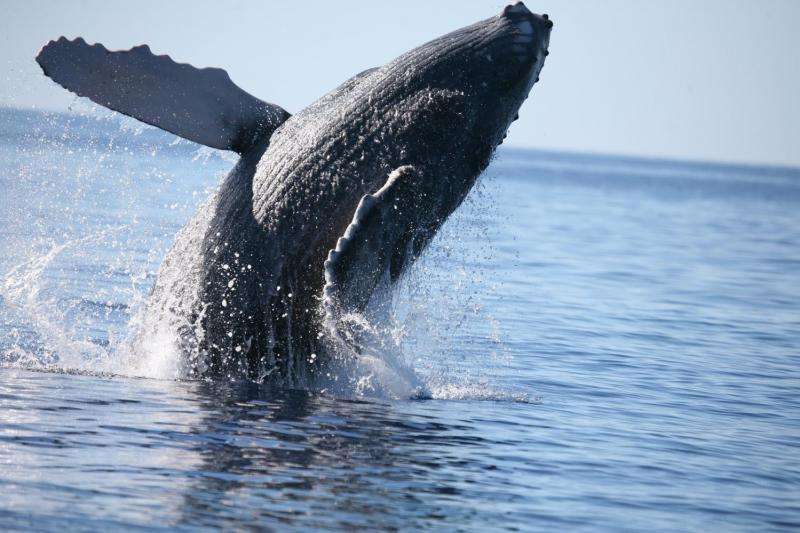Exercise helps young baleen whales develop ability to store oxygen for extended dives

Baleen whale calves develop oxygen-carrying myoglobin as they mature, and exercise may drive the key component of early development, according to a study published January 20, 2016 in the open-access journal PLOS ONE by Rachel Cartwright from the California State University, Channel Islands, and colleagues.
For marine mammals, the ability to suspend external breathing and make extended dives is a defining adaptive trait that allows access to deeper food sources. Deep-diving marine mammals have elevated levels of oxygen-carrying myoglobin within the muscles, allowing oxygen collected at the surface to be stored in the muscles and subsequently used to support extended dives. Little is known about myoglobin levels in baleen whales, and the authors of this study used muscle tissue samples from 18 stranded baleen whales to investigate muscular myoglobin stores in young and adult baleen whales. They included samples from three different age cohorts and three species of baleen whales.
The researchers found that calves only have ~20% of the muscle myoglobin stores as adult baleen whales. They also found that baleen whales develop elevated myoglobin levels over the course of maturation. Additionally, comparisons of myoglobin levels between and within muscles, along with differences in myoglobin accumulation rate in very young baleen whales, suggests that levels of exercise may influence the rate of development of myoglobin stores in young baleen whales, providing a potential explanation for the occurrence of bouts of energetically expensive exercise, such as breaching, during early development in some species of young baleen whales. The authors state that this study highlights the vulnerability of specific age cohorts to impending changes in the availability of foraging habitat and marine resources.
Dr. Cartwright adds, "Young humpback whale calves frequently engage in extended sequences of breaching, even at a very young age. These high levels of exercise have always been something of a paradox, given the limitations on maternal energy resources during the breeding season. This study provides a functional explanation for these high activity levels; this intense exercise drives development of oxygen stores in the muscle tissue, allowing young whales to build their breath-holding capacity and make sustained, extended dives".
More information: Cartwright R, Newton C, West KM, Rice J, Niemeyer M, Burek K, et al. (2016) Tracking the Development of Muscular Myoglobin Stores in Mysticete Calves. PLoS ONE 11(1): e0145893. DOI: 10.1371/journal.pone.0145893
Journal information: PLoS ONE
Provided by Public Library of Science





















